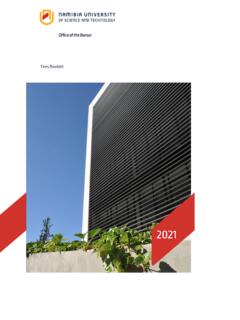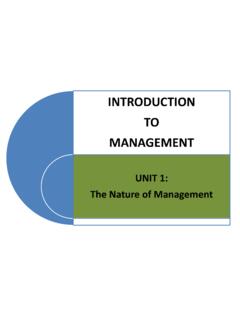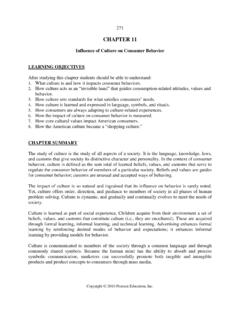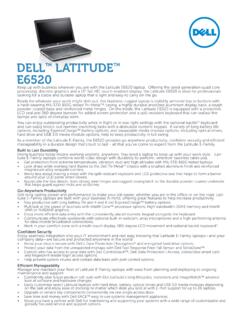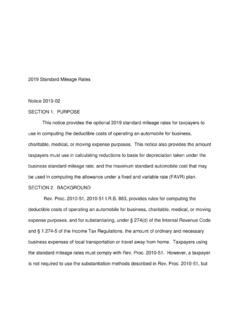Transcription of IKEA Case Study - NUST
1 INTERNATIONAL SUPPLY CHAIN MANAGEMENT BSB20123-7 Written Examination Stimulus Material Case Study IKEA About IKEA Since its 1943 founding in Sweden, IKEA has offered home furnishings and accessories of good design and function at low prices so the majority of the people can afford them. IKEA s vision is to: Create a better everyday life for the many people Its business idea is "To offer a wide range of well designed, functional home furnishing products at prices so low that as many people as possible will be able to afford them" The IKEA concept is based on their market positioning statement Your partner in better living. We do our part, you do yours. Together we save money and focuses on a commitment to product design, consumer value and clever solutions.
2 By using inexpensive materials in a novel way and minimising production, distribution and retail costs, their customers benefit from low prices. IKEA has more than 590 million visitors per year to its stores all over the world. In addition to the visitors in the stores, some 450 million visitors are tracked entering the IKEA website. IKEA s main marketing channel is its catalogue that is distributed world-wide as 191 million copies (in 56 different editions and 27 different languages) displaying some of IKEA s 9,500 different products. Sales for the IKEA Group for the financial year 2009 increased by per cent to a total of billion Euros. At the end of the 2009 financial year, there were 267 IKEA Group stores in 25 countries stocking everything for home furnishing under one roof.
3 In 2007 the European market constituted 82% of sales, followed by North America with 15% and Asia/Australia with 3%. The IKEA Group has 123,000 co-workers spread across functions such as purchasing, distribution, whole-sale, range, retail, support functions and the Swedwood Group (see below for further details). Today IKEA s product range consists of 9,500 home furnishing articles, designed to be functional and good looking but at a low price. Each item is developed by IKEA of Sweden, which is also responsible for giving each product its unique name, such as BILLY and KLIPPAN. The company designs its own furniture, which is made by about 1,220 suppliers in more than 55 countries. IKEA has 31 trading service offices in 26 countries so production can be monitored, new ideas tested, prices negotiated and quality checked while an eye is kept on social and working conditions.
4 Furniture is also sourced through Swedwood, an IKEA-owned manufacturer of wood-based furniture and components. However, third party suppliers provide the bulk of the company s inventory, in line with its beliefs in flexibility and its strategy of limiting investment in productive capacity. IKEA incorporates environmentally friendly efforts into day-to-day business and continuously supports initiatives that benefit causes such as children and the environment. To cut transportation costs, IKEA uses flat packaging; customers assemble the products at home. IKEA s supply chain has a global spread with growing sales and purchasing in all major regions of the world. What makes its supply chain really complex is that its stores are spread across many countries, that it has 1220 suppliers in 55 different countries making its furniture and that the stores are supplied from 31 central distribution centres in 16 different countries or directly from suppliers.
5 In some cases, an IKEA store opening is a national event, with people sometimes travelling hundreds of kilometres to shop there IKEA products are manufactured all over the world When IKEA sources suppliers to manufacture IKEA products, the aim is to find those who can produce products of good function and design at the lowest possible price (although not at any price). Some of these, in the Swedish forests around the birthplace of IKEA, have been working with IKEA since its earliest days. Others have their production plants in China, Poland or Germany. But no matter where in the world its suppliers are, IKEA is always committed to long-term cooperation and does its best to cultivate close and cordial relations. IKEA buys production capacity rather than product quantities.
6 In other words, they order 10,000 hours of production from their suppliers rather than 10,000 bookcases. Local offices near to the suppliers The operative purchasing work is divided up among four trading agents, supported by 31 trading service offices in 26 countries. This means that IKEA is always close to its suppliers, which is one way of creating good business relations between the companies involved. The trading service office s employees can make frequent visits to suppliers and follow the production process closely, enabling new ideas to be tested and regular quality controls to be made. They are also responsible for the important task of monitoring working conditions, social conditions and the external environment around the factories, and for checking that these are constantly being improved in accordance with the code of conduct in The IKEA Way on Purchasing Home Furnishing Products (see Appendix 1).
7 The suppliers, in turn, can have confidence and faith in IKEA. While IKEA know they are a demanding customer, they also feel that they are fair, professional and honest in their dealings. China number one on the IKEA purchasing list Today the majority of IKEA products (66%) are purchased from manufacturers in Europe. However, the largest single country for purchasing is China. Top 5 purchase countries China 18% Poland 12% Sweden 9% Italy 7% Germany 6% As a rule, best-selling products are manufactured by a number of different suppliers. Optimising production potential and concentrating volumes are essential in order to achieve low prices. Thanks to the fact that the IKEA range is the same all over the world, large volumes can be ordered.
8 IKEA has developed a variety of tools to help its purchasers to find the best suppliers. Competition is a natural part of this work. But so, too, is cooperation and collaboration. IKEA also purchases raw materials and hardware in bulk, which it then sells to IKEA suppliers. Long-term agreements give lower prices Bigger volumes mean lower prices. And the aim is for the already low prices to become even lower still. To make this feasible, IKEA signs long-term contracts with its suppliers. This enables them to make the necessary investments and to ensure the supply of raw materials over a long period of time. In certain instances, IKEA may also support suppliers by providing financial assistance. This creates unique business opportunities, enabling IKEA to continue to offer a wide range of well-designed, functional home furnishing products at prices so low that as many people as possible are able to afford them.
9 Currently IKEA plans to open 10-20 new stores every year with a goal to double sales within the next five years. Considering the pace of growth in sales, the many stores and warehouses, and the fact that some business areas change up to 30% of its assortment every year, supply chain planning is a real challenge. The supply chain needs tight control and high levels of visibility to keep costs down and avoid obsolete inventory and/or stock outs . The IKEA supply chain is mainly make-to-stock (MTS) and only a few products are made to customer orders. Consequently, the entire supply chain is heavily dependent on forecasts. The regions and the stores have traditionally had a strong power and a high degree of local freedom in terms of planning and placing replenishment requests.
10 This has led to a fragmented supply chain planning with local optimization and a lot of manual intervention with plans throughout the supply chain. Furthermore, due to frequent shortage situations some regions have purposely overestimated demand to ensure delivery, which in turn has led to imbalance in terms of demand coverage. Hence, some markets have suffered from stock outs during long periods, whereas other markets have ended up with obsolete inventories. Forecasting has been done on a regional level with approximately 120 users striving for different goals and using different methods. Part of the explanation for this is that IKEA has lacked a common and structured tactical planning of demand and replenishment. In terms of capacity planning, all different parts of the supply chain (stores, warehouses, regions, etc.)


